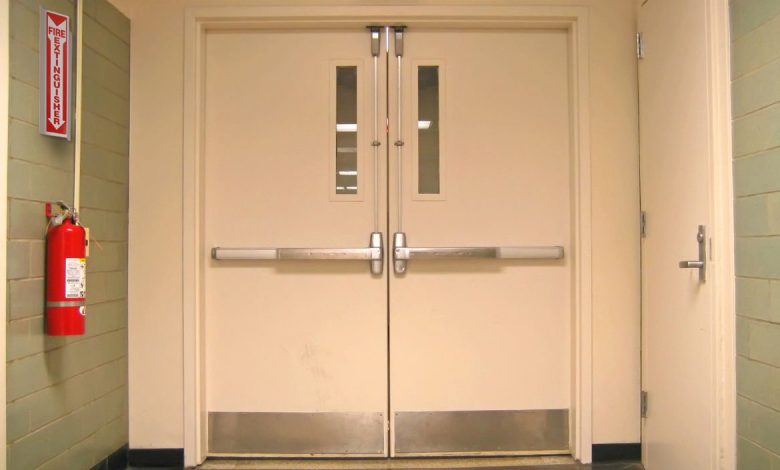Understanding the Benefits of Fire Doors in an Emergency

Ahmarra link to be inserted –
When it comes to an emergency involving a fire in a building, you might not realise until you are actually faced with fire how important a fire door is. A fire door is an absolutely central, and essential, part of fire safety protocol in many public and private buildings, and can be the difference between life and death for those trapped in a burning building. It is important to understand how they work, and what to look out for in terms of maintenance, if you are the person responsible for fire safety in a building.
A fire door is used primarily to protect certain areas of a building in the event of a fire. These areas include stairs and corridors that could be vital as an escape route, but also helps to separate fire and smoke from areas where people might be trapped, allowing for time to rescue those inside a building that is on fire. It can also prevent a fire from spreading quickly, and completely destroying a building. There should be at least 30-minutes before a fire door is overcome by flames and smoke, giving enough time (in theory) for the emergency services to intervene.
 Knowing how important a fire door is then, should lead to a regular inspection of fire door condition and maintenance issues. You should look out for a few things when checking a fire door.
Knowing how important a fire door is then, should lead to a regular inspection of fire door condition and maintenance issues. You should look out for a few things when checking a fire door.
The first is to see whether it is certified and up to industry and regulatory standard as a result. There should be a top-side label (or sometimes the label is on the side of the door) to show that it is a certified fire door. If it is not certified the door should be replaced with one that is.
The second aspect to look at is the gaps around the fire door, which should be consistent and less than 4mm. A good way to test this is with a £1 coin, which should fit around the frame of a fire door. The gap at the bottom of a fire door can be a little bit larger.
The seals on a fire door should be in place and working correctly. A fire door without seals is practically useless, as it is the seals that will help a fire door block any fire or smoke from moving through a building around the edges of the door itself. You should also check the integrity of the hinges.

Check that the fire door closes on its own, and fully closes at that. If a fire door does not fully close it is no use in an emergency situation, and even a few centimetres of sticking out could be dangerous to those inside a building when a fire breaks out.
If all of those aspects of a fire door are fully maintained the next step is to ensure that everyone in the building understands how a fire door works. Never leave fire doors propped open, and never block potential fire escape routes. This should all help you maintain high standards of fire safety in a building you are responsible for.





